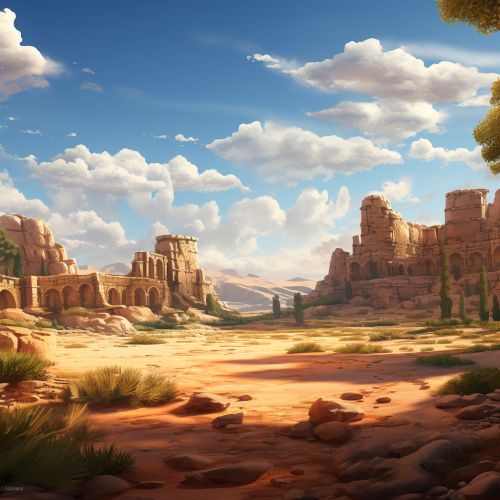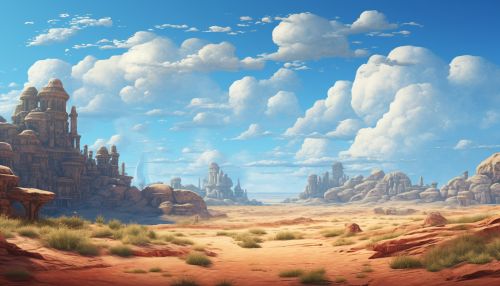History of the Ancient Near East
Introduction
The Ancient Near East is a term that encompasses the early civilizations of the region extending from the eastern Mediterranean to the Iranian plateau. The Ancient Near East is considered one of the cradles of civilization. It was here that intensive year-round agriculture was first practiced, leading to the rise of the first dense urban settlements and the development of many of humanity's first advanced institutions and technologies.
Geography and Climate
The Ancient Near East covered an area roughly corresponding to modern-day Middle East, including present-day Iraq, northeastern Syria, southeastern Turkey, and the western fringes of Iran. The region is characterized by its arid and semi-arid environment, with a climate that varies from Mediterranean in the west to desert in the east. This geography and climate played a significant role in shaping the societies and cultures of the Ancient Near East.


Early Periods
Pre-Pottery Neolithic
The Pre-Pottery Neolithic (PPN) period, dating from around 10,000 BC, saw the development of the first sedentary farming communities in the Near East. The PPN is divided into two phases: PPN A and PPN B, which are distinguished by changes in architecture and lithic industries.
Pottery Neolithic
The Pottery Neolithic period, beginning around 6,500 BC, is characterized by the introduction of fired clay vessels. This period also saw the development of more complex societies, with increasing social stratification and specialization of labor.
Chalcolithic
The Chalcolithic period, also known as the Copper Age, saw the introduction of metallurgy, with copper being used for the first time to make tools and weapons. This period also saw the development of more complex societies, with increasing social stratification and specialization of labor.
Bronze Age
The Bronze Age in the Ancient Near East made a significant leap in technological advancement with the discovery of how to make bronze from copper and tin. This led to improvements in agriculture, warfare, and craft production.
Early Bronze Age
The Early Bronze Age (3000–2100 BC) saw the rise of urbanization in the Ancient Near East. The period is characterized by the development of city-states, each with its own king and a territory that included a large city and its surrounding countryside.
Middle Bronze Age
The Middle Bronze Age (2100–1550 BC) is characterized by the rise of several powerful kingdoms, such as the Old Assyrian Empire and the Old Babylonian Empire. This period also saw the composition of some of the earliest known literature, including the Epic of Gilgamesh.
Late Bronze Age
The Late Bronze Age (1550–1200 BC) is characterized by the rise of the Hittite Empire, the New Kingdom of Egypt, and the Mycenaean civilization. This period also saw the first widespread use of iron.
Iron Age
The Iron Age in the Ancient Near East is characterized by the widespread use of iron and the development of the first empires, including the Neo-Assyrian Empire and the Neo-Babylonian Empire.
Early Iron Age
The Early Iron Age (1200–900 BC) is characterized by the collapse of the Late Bronze Age civilizations and the subsequent Dark Age. This period also saw the emergence of the Phoenicians and the Arameans.
Middle Iron Age
The Middle Iron Age (900–600 BC) is characterized by the rise of the Neo-Assyrian Empire, the most powerful empire of the time. This period also saw the development of the first alphabetic writing system.
Late Iron Age
The Late Iron Age (600–330 BC) is characterized by the fall of the Neo-Assyrian Empire and the rise of the Neo-Babylonian Empire and the Achaemenid Empire. This period also saw the conquest of the Near East by Alexander the Great.
Conclusion
The Ancient Near East was a region of remarkable innovation and cultural development. Its early civilizations laid the groundwork for many of the institutions, technologies, and ideas that have shaped the course of human history.
